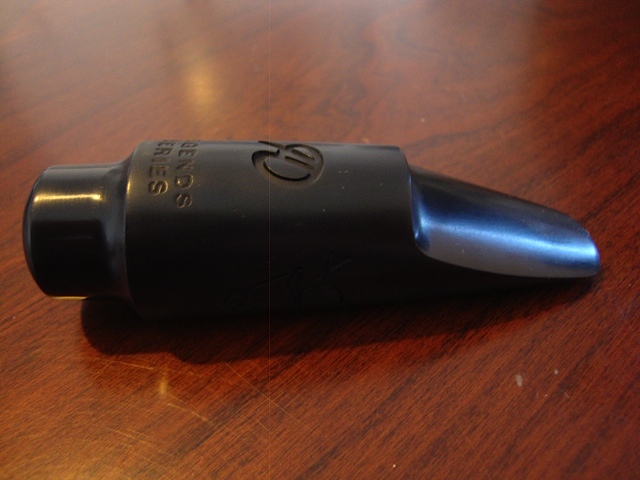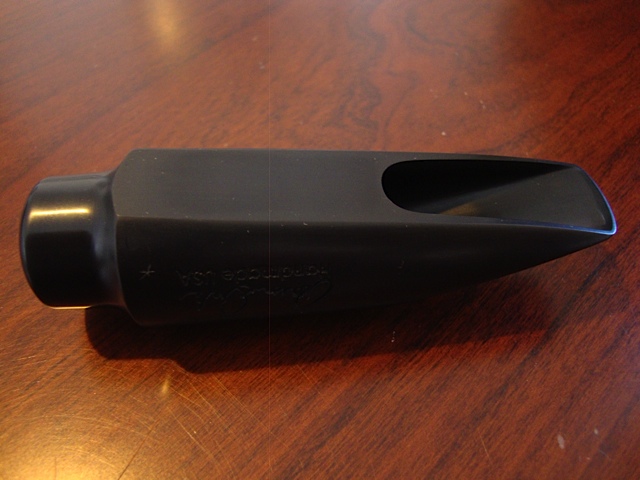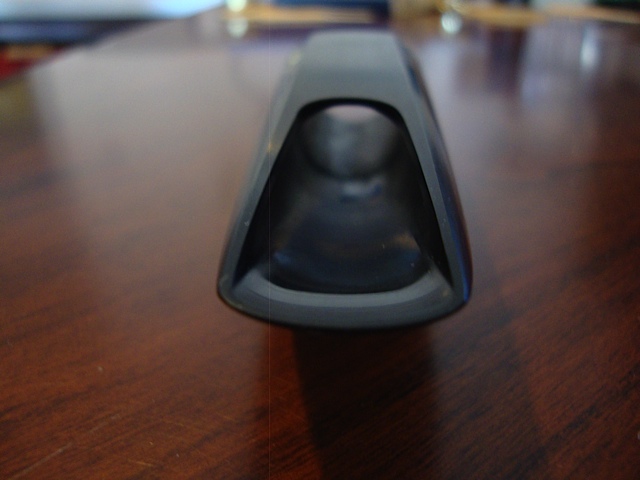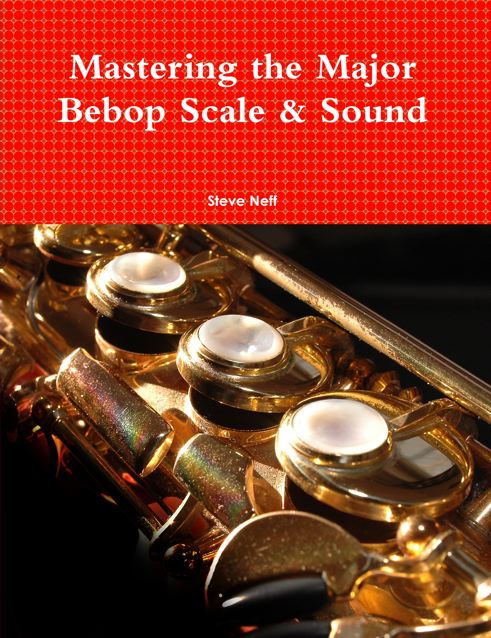This is a review of the Stan Getz Legend Series tenor saxophone mouthpiece. This mouthpiece I’m trying today is an exact copy of the actual mouthpiece that Stan Getz used at the end of his career. The copy is so exact that it even has slight teeth marks in it where Stan used to put his teeth on the mouthpiece…………now that is exact! ( If you look at the picture below you can see the slight indentation)

Here is what is posted on the Drake website about the Stan Getz mouthpieces:
This new model is born from a very special collaboration. Below you will find the story of its making, and images.
In order to achieve the greatest amount of detail in the copying of Stan’s original mouthpiece, these pieces are made from our specially formulated vintage resin material. Details like Stan’s faint teeth impressions can be found on the 5* and 6* models only, and will not interfere in any way with your unique physiology and approach to playing.
Available tip openings – 5* (.085″) (Stan’s original), 6* (.095″), 7* (.105″)
“If you like an instrument that sings, play the saxophone. At its best it’s like the human voice.” ~ Stan Getz
Since 1995 I have spoken to so many people about a mouthpiece project, but for one reason or another, it never seemed right. In fact, this project simply could not move forward until I had found The Best people- a select few who posses the knowledge, craftsmanship, intelligence, integrity and heart that could measure up to the high standards set by my father. With Aaron Drake of Drake Mouthpieces and Les Silver of RS Berkeley Musical Instruments, I have found The Best; and, at long last, I am now proud to introduce the Stan Getz Signature Mouthpiece. Thanks to Aaron Drake’s unique methods and painstaking craftsmanship, the Stan Getz Signature Mouthpiece is an exact replica of the one Stan played exclusively, heard on his last recordings, including People Time, Serenity and Anniversary, Apasionado and Bossas & Ballads. While it is an exact replica of Stan’s original vintage mouthpiece,
(right down to the teeth marks, et al), Mr. Drake has improved on it- not only utilizing his experience as a saxophonist, but also his expertise in crafting lovingly hand made mouthpieces- all made right here in America, using tools and materials only produced
in the United States. Something that gave Stan an enormous amount of joy and one of his passions, was helping the younger generations of musicians to discover the world of music and sound. Of course he especially loved it when a young saxophonist would ask for advice on achieving a sound, technique, equipment, practicing, improvisation, etc. He truly loved interacting with the younger crop of musicians beginning their journey. By bringing his mouthpiece back to life (so to speak), I know he would feel honored that he was possibly, in some very small way, contributing to the endeavors and artistry of saxophonists around the globe, at the beginning, middle or seasoned part of their creative walk. I would like to thank my friend, trumpeter Rich Szabo for the introduction to Les Silver of RS Berkeley Musical Instruments and for intuitively knowing that his lifelong friend, Les was the very man that I had been looking for all these years to help me get my dream out of the clouds! Also, my deepest thanks to Les Silver and of course Aaron Drake for making my dream a reality! I am so pleased to be introducing this Stan Getz Signature Mouthpiece as
part of the “Legends Series.” I hope it will bring you closer to your playing goals.
Stan would truly love that!
Bev Getz
July 15, 2010
As you can read, Bev Getz (Stan’s daughter) was personally involved in the development of this mouthpiece which I think is pretty cool.
The mouthpiece tip opening that I am trying today is the 5* (.085 tip). I usually don’t play an opening that small but I was very curious to see what a mouthpiece that Stan Getz played would play like. I put a Vandoren Java 3 1/2 reed on and gave it a blow.
My first thought was that it dark and centered sounding. It had a nice focused sound to it. Like it was a lot of sound packed into a tight beam of projection. I love it when a mouthpiece has that quality. Even though I felt it was focused it was still very dark sounding which is a cool combination. Before I tried the mouthpiece I put on some recordings of Stan Getz I had and tried to imagine playing with that type of sound. His style and playing concept is very different than mine but I’ve always enjoyed the recordings of him that I have had.
Stan Getz Legend Series Tenor Saxophone Mouthpiece
One of the recordings I have of Stan is him playing with Bill Evans on “Night and Day” which is amazing. He gets a nice light and airy quality to his sound that is still full and sweet sounding. When I first played the 5* I could indeed imagine getting a bit closer to that Getz type tone. Even though this mouthpiece was a smaller tip than I am used to it, it was a lot of fun to play. If you are into the Stan Getz sound and concept I would give this mouthpiece a try. Don’t think it is something you can play on a modern rock gig because it isn’t but for a laid back jazz gig it would be great. On this sound sample I’m just playing a simple “Night and Day” with a little bit of noodling. Nothing fancy but you can hear a bit of the tone of the mouthpiece. This is more laid back than I usually play. I was just in that type of mood after listening to Stan for an hour or two.
Thanks for listening. Let me know what you think below. I love to hear what your opinions are. Steve






Great sound always, from what I hear, this mouthpiece has a nice fuzziness to it, but rings when you need it. It would be nice to hear one of these played with a harder Vandoren Traditional, just for kicks.
Thanks a lot Steve!
Based from what I hear, is it correct that the Stan Getz mpc is much more darker, warm and alive compared to the Ambika mpc. I thought that Ambika is much more darker due to low baffle + true large chamber.
Is it ok if you can compare and rank these mpcs (Stan Getz, Ambika and Morgan 7L thru:
Tone
Intonation
Control/Response
Volume
Thank you very much. I’m in a hunt for a dark, warm and luscious tenor mpc 🙂
Allan
Allan,
I’m not sure I can remember each mouthpiece and rate them by that memory. I don’t have them anymore so I am just going by my ever fading memory here.
As far as tone, I remember the Ambika being the darkest then the Stangetz was a little brighter and the Morgan 7L a little brighter still. Personally, the Ambika was a bit too dark for me. I like a little bit of sparkle and edge in the tone. All 3 were fine for intonation. I believe the Ambika was the best as the large chamber suited my SBA intonation wise but the other two were very good also. For control and response I think the Morgan had the quickest response, then the SG then the Ambika for me. For control I liked the SG the best. I could hop all over easily. For volume the Morgan was the loudest. The SG and Ambika were about the same but the SG had a bit more of a ring to the sound so I think it would cut through a little more in a live playing situation. Hope this helps. Steve
Thank you very much Steve!
Hello Steve,
If you get the opportunity, it’s interesting to try the size 7* (SG) with for example a Roberto’s Woodwind 3s reed.
I tried it with my SBA tenor and it’s great!
A nice sound indeed, but it sounds more like an alto saxophone and not and not what I hear when Stan Getz is playing. I have myself the No 6* (0,095) and it sounds very diffrent with Vandoren Java 2.5. But saxophone mouthpieces is a never ending story, as it’s too many variables to keep track of. The mouthpiece, the reed, the humidity, your blowing style etc etc.
Hey Steve,
This seems like the most relevant place to post this question. Are you going to try the Parker Legend series or the Johnny Griffin Legend series pieces?
Thanks,
Jack
Hi Jack, Yes I probably will. I have 3 of the Parker mouthpieces on my desk now. I had back surgery a few days ago so I’m a bit behind the ball but I hope to get them reviewed this coming week. The Griffin mouthpiece will probably be coming my way sometime soon. I really hope there is a Cannonball and Desmond piece also. I am so curious to try those………………
I have just played the saxophone for a couple of months, after having played the clarinet for years. But that was way back. Started playing the clarinet again three years ago, but was convinced by my music buddies to try the tenor.
The tenor really got me, even if I haven’t really got the tenor.
I have now tried several combinations of mouthpieces and reeds. I have arrived at a metal Otto Link NY, 7* (105) and a Vandoren Java 2.0 (the green version). This combination works fine for my swing jazz style. It gives a rougher style the the Getz 6* and Vandore Java reed 2.5.
My saxophone is a brand new Selmer Super Action Series II. It works fine for me, but I haven’t tried anything else.
Hi Steve,
Thanks for the info! I’m looking forward to your review! And I hope you get well soon, your a gift to the saxophone community, and your site has helped me immensely. I’m really looking forward to the Johnny Griffin pieces, I personally think the legend series pieces are a great thing! of course I wouldn’t sound like Parker, or Griffin playing on their exact set-up but it’s interesting to see what other people used to get there sound. And Yes hopefully Aaron can recreate Cannonball’s piece, and Desmond’s as well, I would definitely pick up Cannonball’s piece. I also hope Les, and Aaron will make a Bob Berg Legend Series, as well as Trane Legend Series as well.
anyway sorry about the rant,
Hope you feel better soon Steve,
Jack
Hey Steve,
How are you doing? I’m just wondering if your ever going to try the Stan Getz again but in a 7* like most of your other Link type pieces that you review?
Hope you had a great holiday,
Jack
Just buy a slant sig before the ‘no Usa’ and be done with it. That’s what I have and it has the Getz sound bang on! The drake is nice but I can hear something funny going on in the higher range – not to sure what it is though.
I am 79 and playing the tenor(P Mauriat DK66) for 4 years. I purchased a Stan Getz Legends Mouthpiece and wondered what a good choice would be for a ligature for a nice soft sound, not focused to play balads. Thanks to all. A late newbie, Lee
Hi Steve,
Do think one can come close to Stan Getz’sound with that mouthpiece and the modern iteration of the Mark 6(i.e a Selmer Ref 54)?
Patrick, that is a hard question to answer. Is it possible? I would think so………but I can’t answer that with 100% certainty as there are so many variables involved……..
I am trying a new RS Berkeley Stan Getz Legends mouthpiece in a few weeks. I guess Aaron Drake is no longer involved with them. Keep an eye on the site for when the review is posted…..,,,,,,
Bought an Aaron Drake legend “Stan Getz” mouthpiece previous week at ebay. Used it on my Selmer mrk. VI ´59 .
6* with a 2½ reed
Perfect 🙂
Thank you
-Meyer
Bo, That’s great! I really liked the Stan Getz piece I played also………
I always thought Getz played a brilliant mouthpiece. Please respond.
Sam,
Do you mean a Brilhart? Or something else by the word brilliant?
I’m trying, having just started playing sax again after many years and would like you advice on getting the wonderful Getz sound . Would probably not be able to handle above a 4 lay at first. Getz lives!!
Larry McManus
Hi Larry, I think the original Getz mouthpiece is a 5. Not too large…….. I thought it played great although the one I tried was made by Drake mouthpieces. The new ones are made by RS Berkeley. I haven’t tried one of those yet. Steve
I love Stan Getz. I currently use a Yanigasawa #5 hard rubber. I’m wondering if I should try a more expensive piece and if so which one. I am an intermediate player. 6 months back into the sax after 9 years of not playing. Here I am using a variety of reeds/strengths.
https://soundcloud.com/getzynova
Should I just keep practicing with the Yani or what? Thanks for you help!
Oscar,
It’s really up to you on whether you should stick with the Yani mouthpiece or switch. A more expensive piece won’t automatically make you sound better it’s more about if you click with a certain mouthpiece. I have played thousand dollar mouthpieces I didn’t like that much and 50 dollar mouthpieces I loved……….It’s about finding that piece that you really connect with and helps you get the sound you want. Good Luck, Steve
You will never be able to copy Stan Getz sound, if that’s what you are after. The sound depends on the mouthpiece specs, the reed and how you are blowing. If you are a jazz player, #5 seems to me to be too closed, even if you have a stiff reed. I would go for a more open mouthpiece, 7 or 7* with a #2 reed. As said here before, there is no relationship between the price of the mouthpiece and the sound.
Thank you very much. Sounds just like Stan Getz. And nice playing too. I use Van Doren Java T55. That’s a 2.5 mm tip opening and a moderate baffel with #2 reeds. Van Doren is very good at explaining what the different measurements will do for you sound wise. No bragging, just the facts.
Hello again!
I notice as I record the tenor how sharp sounding my mouthpieces can be, and thin. As a temporary measure, I clip a deflector on the bell so the highest frequencies won’t hit the mike. I have five VanDoren mouthpieces now and it seems I can’t get the sound soft enough with van Doren. I have the Jumbojava, quite shrill, the Java, less shrill, I began with the V5 T35 with a 2.3mm tip, that for a while I thought too SOFT, until I really heard the sound thanks to the deflector. I also bought two V16’s, one with 2.5 mm tip and one with 2.7 mm tip ( the T6 and the T7). I don’t want to continue buying mouthpieces for the rest of my days and I love some of Hank Mobley’s sound (early period), and Getz’ of course. I’m now pretty sure they both used something softer than any of my VanDorens. I now use the T35 or the T6, but I want something softer.
Please recommend something for me! For tip, I think about 2.3 mm is ok.
Thanks for the beautiful version of Night and Day.
Nick, I believe I can get pretty soft on all of those mouthpieces. I would look more towards your embouchure and how you are using your air coupled with what reed you are using. Embouchure can make a huge difference with how you are interacting with the reed as that is the point where you are connecting with the reed which is making the sound. I have a few video lessons on embouchure and sound on my site that might help. Also, practicing long tones at ppp really helps you to get used to supporting and stabilizing the air stream for those softer volumes. Hope this helps, Steve
His sound was also shape of his mouth, throat breathing arch of palate
I knew him since the early days at the vanguard, I was his dentist for a number of years 70’S,80’s until he moved to California
great guy and friend
Otto link HR 5* and (6* with Arthur Fiedler at Tanglewood )
toothmarks where he wore through the mpc’s sometimes
i repaired once time in an emergency La Voz Hard or Extra hard reeds
PHIL
I purchased a Stan Getz Model Drake MPC on 02/2014. I had severe blowby. and was nearly unplayable. The Lay measured .134″. I had John Reilly bring the lay down to .88″. The tip opening went from .095 to .091, which was fine. The MPC is now one of my favorites.
Hi Alfred, What is blowby? I have never heard of that. How are you measuring the facing curve? I don’t understand the measurements of .134 and .88. Thanks, Steve
Dear Steve, Given a chance to answer what “lay” is, I’d say it’s the length from the tip to where the reed touches the mouthpiece. But the mentioned lengths, .134 and .88, seem to be a misstatement as going from .134 to .88 is not “down”, it’s up. He probably means .088. Both of these lengths seem incredibly short though, as a typical facing – which I think is the same as “lay” – is more around half an inch or so. I like the way VanDoren explains their mouthpieces. It still took me at least a year to find out what I wanted. I like using a deflector mounted on the bell to reflect the sound to your ears. Sincerely, Nick From my iPad
Thanks Nick. Yes, I didn’t understand his measurements for the facing curve at all. Most curves I see for tenor sax are either reported 24 or 48. 25 or 50, 26 or 52, etc……. I have no idea how .134 or .88 or even .088 works with that normal measurements. Steve
Oh, I forgot: Blowby to me would just mean that air leaks between the reed and the mouthpiece. I would think that this is a sign of really poor conformity between mouthpiece and reed. I would imagine it happens only if there’s a cut in a rail or something.
Thank you again.
Nick
From my iPad
Thanks Nick. I have never heard of that term before. Steve
Hi Steve,
do you know this mouthpiece “Legend series” of which of those from Stan Getz played in his life matches?
I have this record, 1950 – ’51, which I also find on the Internet https://www.youtube.com/watch?v=lDWqSLE6fVE
(and therefore I find it convenient to send the string); here the sound of Getz seems, for my taste, more beautiful and compact and centered than usual: there is also a picture that, however, I do not know if it refers to the recording of the disc: if so, it is the photo of the mouthpiece. Do you know what a mouthpiece is?
I must say that the sound that I liked most, in addition to that of the songs of this record in string, is that of the last Getz before death, reading an interview, should be a Meyer HR 7 long shank.
Happy New Year!
Giuseppe.
Giuseppe, Sorry, I don’t know which mouthpiece it is. I’ve tried to find out the original mouthpiece for all of the RS Berkeley mouthpieces but they won’t reveal that information. It’s top secret apparently! All I know is that it was in Stan Getz’s saxophone case and it had his teeth marks in it. Steve
Thank you for informing for me; you’re always kind.
I know from an interview that, just before he died, Stan Getz had asked the Ottolink to change to make a thinner Ottolink, I suppose modern, but they had replied that it would change sound; then he bought a Meyer 7 long shank, with excellent results, for my taste, having listened to him on TV. A sound much”hard”, darker and centered (and relatively almost coltraniano”) than usual.
But that of Berkeley should be an old model of mouthpiece.
It is true that they seem very reticent to give explanations, as I experienced personally:
I also asked very simple information when I wanted to buy the Legend Dexter Gordon 0.080 mouthpiece, since I had been told that there were three models, natural, silver and gold plated, to know the difference between them and, if necessary, have the photos (there was only one of the gold plated) and what model it was that you had tried: I was answered, I got the impression rather “abruptly”, that could not answer “all those questions” and that, if I did not like it, I could pay the insurance and return it to them: according to them I lose time to go to bank for bank transfer and to post office once, to try the mouthpiece, to pay the insurance and then to send it back; repeating the operation for the three models and then, eventually, ordering the preferred one?
Since 1) I do not have much time to waste (in Rome to go to the bank you lose half a day and go to the post office another half) and 2) I do not buy things that do not even know at least in photography, I left off , even because I like to receive extremely kind answers from the seller, believing that I have the right to know what I’m buying.
It was a pity because the mouthpiece seemed interesting to me.
Best wishes for a happy 2019, even if I am convinced that the calendar is just a convention invented by men! 🙂
Giuseppe.
Well, in RS Berkeley’s defense, the different finishes are not hard to imagine. One would be gold, one would be silver and one would be brass. We can all imagine what those would look like. I don’t think the different platings would make much of a difference at all although I myself am not a fan of raw brass mouthpieces. They probably don’t have photos already done as I haven’t seen any. I think it was also kind of them to offer you a refund policy as many mouthpiece makers do not do that. Steve
For the mouthpiece of Stan Getz, perhaps one could trace what it was, given that, in the interview, he said that he played in some periods with double lips embouchure and at other times resting his teeth: therefore, if on this mouthpiece there is the sign of the teeth, refers to a mouthpiece used in a period when he used to play with his teeth!
In my defense: I know that silver, according to some, makes the sound brighter, according to others darker; having listened to a silver chiver compared to brass, strangely, I found it with more volume, more full-bodied and structured in sound; the plating or not, however, influences, perhaps, the sound slightly.
When asked, I was told that this must be decided by the musician: such as? If I do not try them!
Moreover, as you rightly say, they could answer that they had no images of the other two mouthpieces and that, however, the sound did not change but it was only an aesthetic choice.
Since I had listened to your test, they could answer, to my specific question in this sense, of which of the three was the model sent to you.
However, independently of the “content” of the answer, I did not like “the tone”, the way, to reply, that did not seem particularly kind to me …
Giuseppe.
I had a small correspondence for e-mail with Mr. Ken Okutsu and Mr. Phil Engleman, and they were both extremely courteous, kind and willing to answer all my questions and, indeed, they asked me to ask them for any further advice serve!
I’m used to dealing, and I like dealing, with people like that. And like you, always kind!
Giuseppe.
I bought the RS Berkeley “Stan Getz Legends Series” Black Resin Tenor Sax Mouthpiece (.085” Tip Opening) a few years ago. I had a brand new cork put on my tenor’s gooseneck before I received the mouthpiece. The first thing I noticed when the mouthpiece arrived, was that it went way too far onto the cork. It sounded great, but the problem was that when I pulled the mouthpiece out far enough to be in tune, it wouldn’t play at all, because there was air escaping through a 1/16 of an inch gap; that’s how big the opening was. The cork was not too thin, because it was new, and my metal mouthpieces all fit as tight as could be. I have yet to find a solution to this. If I get a thicker cork to make the Stan Getz mouthpiece fit, my metal mouthpieces won’t be able to fit. (I heard about a product called “Valentino Synthetic Neck Cork,” which compresses for a smaller mouthpiece bore, but then expands to its original thickness for a larger mouthpiece bore; but it seems to me that if the material is soft enough to compress that much, the larger bore mouthpiece would wobble when on the gooseneck.) I’m just surprised that I haven’t seen any reviews mentioning the overly-large bore of the mouthpiece. I’d hate to think that I’ll have to have one gooseneck with a really thick cork for the Stan Getz mouthpiece, and then another gooseneck with standard thickness cork for my metal mouthpieces. Any tips? Have you heard anything about this issue?
Thanks,
David Lindsay
David, Sorry you have to deal with that. I don’t remember the bore of the mouthpiece being that large, at least not that I remember. If it was, I certainly would have mentioned it in the review as a negative. What I usually do for larger bore mouthpieces is just wrap some paper around the cork so the mouthpiece fits and then unwrap it for other mouthpieces.